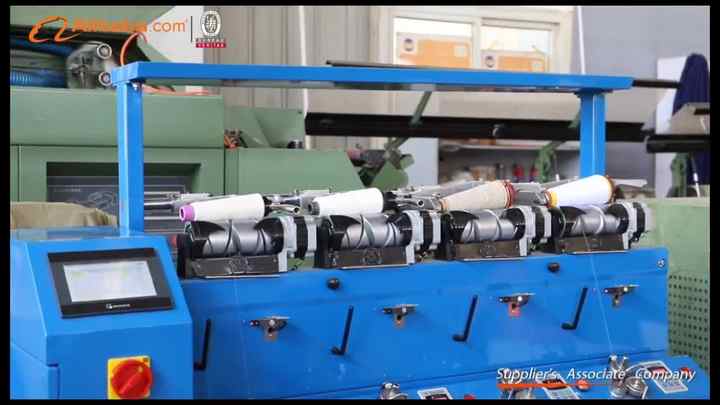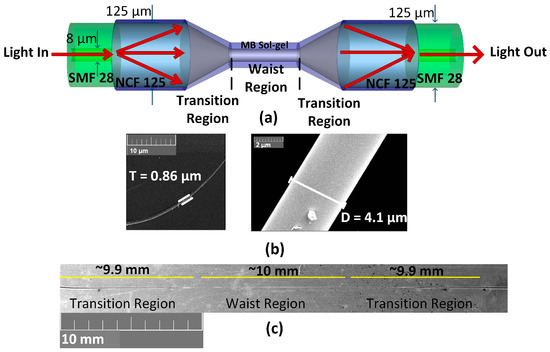The Importance of an Optical Fibre Diameter Analyser in R&D
Maximize Your Fiber Optic Efficiency: Comprehending Optical Fibre Size Analyser Technology
The performance of fibre optic systems is seriously affected by the accuracy of their diameter, an aspect often ignored in the pursuit of optimal signal honesty. Understanding the modern technology behind optical fiber size analysers reveals the intricate balance in between dimension precision and production quality. These gadgets not only improve compliance with market requirements yet additionally supply real-time understandings that can preemptively deal with potential problems. However, the effects of their use expand past mere dimension; they can essentially change the landscape of fiber optic efficiency. What factors should one think about to harness their complete possibility?
Value of Optical Fibre Diameter
The diameter of optical fiber plays a critical function in determining the performance and performance of communication systems. Alternatively, smaller diameters have a tendency to support less settings, which can improve signal clearness and decrease crosstalk.

In addition, recognizing the size's ramifications can bring about set you back savings by lowering the demand for signal boosting and repeaters in substantial networks (optical fibre diameter analyser). To conclude, the importance of optical fiber diameter can not be overstated, as it straight influences the total efficiency and dependability of modern-day communication systems

Just How Diameter Affects Signal Quality
Signal high quality in optical fibre systems pivots substantially on the diameter of the fiber. The diameter influences a number of essential criteria, including depletion, bandwidth, and modal diffusion. A smaller size can bring about higher depletion rates, resulting in signal loss as light travels through the fiber. This attenuation can endanger the integrity of the transmitted information, resulting in a decrease in signal top quality, especially over lengthy ranges.
Conversely, larger diameters usually permit improved light capture and decreased modal dispersion, boosting signal clarity. In multimode fibres, a bigger core size can support several light modes, yet it may likewise present intermodal dispersion, which can break down signal top quality. For that reason, picking the ideal fiber diameter is crucial for achieving the preferred efficiency in certain applications.
In addition, the communication in between the fibre diameter and the wavelength of the light made use of plays an essential function in identifying the reliable transmission distance and general signal integrity. Understanding exactly how fibre diameter impacts signal high quality is essential for network developers and engineers aiming to enhance optical fibre systems for dependable, high-speed information transmission.
Summary of Size Analyser Innovation
In several optical fiber production processes, precise measurement of fibre diameter is crucial for guaranteeing consistent performance and quality (optical fibre diameter analyser). Diameter analysers are innovative tools created to analyze the physical dimensions of optical fibers with high precision. They use innovative optical and laser innovations to gauge the diameter, ovality, and concentricity of the fibre, hence providing vital information for quality assurance
These analysers can run in-line during the manufacturing procedure or as part of off-line testing protocols. In-line systems make it possible for real-time surveillance, allowing producers to change criteria quickly, thereby keeping optimal production conditions. Off-line analysers, on the other hand, provide extensive examinations of batches, making certain that any type of variances from defined tolerances are identified and resolved.
Diameter analysers considerably add to the reduction of problems in optical fibers, enhancing general product dependability. By regularly determining key criteria, these technologies promote conformity with sector requirements and specs. As the need for high-performance optical fibers continues to increase, the role of diameter analysers comes to be progressively crucial in achieving the wanted high quality and performance requirements in fiber optic systems.
Secret Attributes of Fiber Size Analysers
Although different models of fiber size analysers exist, they frequently share a number of key attributes that improve their capability and dependability. Among one of the most significant functions is high-resolution dimension capabilities, which make certain specific size analyses, critical for preserving quality assurance in fiber production. Furthermore, numerous analysers include sophisticated optical sensing units created to spot minute variants in fibre diameter, therefore providing important information for process optimization.
An additional crucial function is real-time monitoring, allowing operators to receive instant responses on fibre size throughout the manufacturing procedure (optical fibre diameter analyser). This capacity helps with quick modifications and reduces the likelihood of problems. Numerous analysers likewise come geared up with easy to use user interfaces, enabling operators to easily navigate with data and settings outputs
Additionally, durable data storage and analysis capabilities are necessary for tracking historic efficiency trends and making certain conformity with industry criteria. Some designs even provide connectivity choices for assimilation into existing manufacturing control systems, improving total functional performance. Last but not least, small and mobile layouts allow for adaptable release within production atmospheres, ensuring that quality control processes are seamless and efficient. These features jointly add to the effectiveness of fiber diameter analysers in optimizing fiber optic efficiency.
Ideal Practices for Fiber Optimization

First, regular calibration of optical fiber diameter analysers is essential. This makes visit this site sure precise measurements and minimizes potential discrepancies that can impact performance. Next off, maintaining a tidy functioning setting is vital; dust and impurities can lead to indicate destruction.
In addition, it is crucial to pick fibres that meet particular application requirements. This entails evaluating aspects such as depletion, bandwidth, and ecological problems. Correct installation techniques need to likewise be followed, including preventing sharp bends and extreme tension, which can jeopardize fiber integrity.
Moreover, employing sophisticated monitoring systems can help with real-time performance analyses, enabling punctual recognition of issues. Normal screening and upkeep ought to be performed to make certain that fibers continue to be within optimum functional specifications.
Lastly, training workers on the most recent fibre optimization innovations and approaches will enhance their capacity to carry out reliable approaches. By following these best practices, organizations can substantially improve the performance and life expectancy of their optical fiber systems, ensuring reliable interaction and information transfer.
Final Thought
In final thought, the assimilation of optical fibre size analyser modern technology is critical for making the most of fiber optic performance. By guaranteeing precise measurements of fiber dimensions, these analysers substantially boost signal quality and minimize losses throughout data transmission.
Signal quality in optical fibre systems hinges substantially on the size of the fiber.In many optical fiber production processes, precise dimension of fibre size is necessary for guaranteeing consistent efficiency and quality. As the demand for high-performance optical fibres continues to increase, the role of diameter analysers becomes Continued progressively essential in achieving the desired top quality and performance criteria in fibre optic systems.
These features jointly add to the efficacy of fiber diameter analysers in optimizing fiber optic efficiency.
In conclusion, the assimilation of optical fiber diameter analyser modern technology is critical for making best use visit site of fibre optic performance.